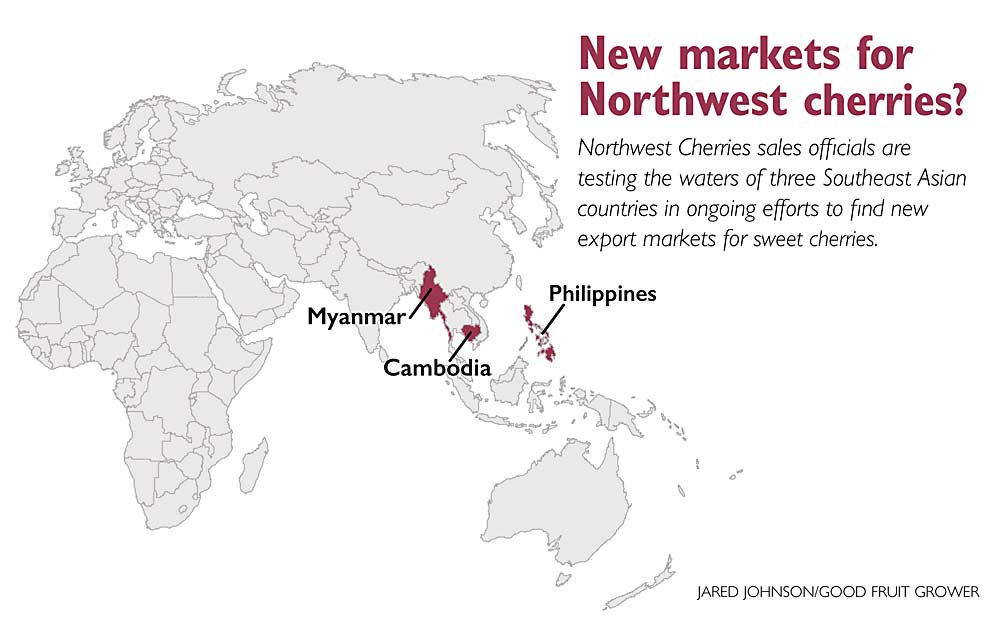
Edison Sarmiento, a merchandiser for Northwest Cherries, sets up a display at a farmers’ market in July 2018 in Quezon City, Philippines. Northwest Cherries is testing out the market for sweet cherries in the Philippines and two other Southeast Asian countries. (Courtesy Northwest Cherries)
Retailers and shoppers in Cambodia, Myanmar and the Philippines all like fresh cherries from the Northwest.
That’s not a problem. Trainings in handling and merchandising are well attended.
However, in Southeast Asia, the grower-funded group hired to collectively market sweet cherries from five Northwest states faces problems beyond just taste, said Keith Hu, director of international operations for Northwest Cherries.
“We are facing logistical challenges to Myanmar and devaluation of the Philippine peso,” Hu said.
Hu is leading the Yakima, Washington, group’s effort to test the waters in the three nations as potential long-term markets for cherries grown in Washington, Oregon, Idaho, Montana and Utah.
Grower assessments fund Northwest Cherries, but Hu and his team applied for and received $90,000 in grants from the U.S. Department of Agriculture’s Emerging Markets Program to help develop international sales outlets in Myanmar and the Philippines. Meanwhile, he spent $10,000 of grower money to experiment in Cambodia.
Hu and staff set up trainings in the care, handling and merchandising of cherries for importers, wholesalers and retailers from grocery stores and open-air markets.
The funding runs out this year, so after the 2019 season, Hu and the organization will decide — based on sales volumes, retailer participation, overall economy and consumer behaviors — if they want to use grower funds to continue to market cherries in Myanmar and the Philippines in 2020 and beyond.
With Cambodia, he already has made up his mind to continue the marketing efforts.

Most global economists point to Southeast Asia as a region with potential for new markets — with rising manufacturing economies, increased standards of living and more discretionary spending. Hu considers them premium markets, which means high prices.
The Philippines have a 7 percent tariff on cherries, as well as apples and pears, according to the Northwest Horticultural Council, a Yakima organization that represents the tree fruit industry in federal policy and international trade. Myanmar has a 15 percent tariff on fresh fruit. Cambodia has a 7.5 percent duty on cherries and a 10 percent value-added tax, Hu said.
New markets became even more important in the wake of the U.S.’s trade disputes with China, which have severely curtailed exports of Northwest cherries. In 2017, China was the top export destination. Places such as the Philippines, Myanmar and Cambodia can’t make up the difference alone, but they would help, Hu said.
“No new markets can make up the difference on the sales volume lost in China,” he said. “At least I can’t see it. Continuing to develop new markets will help reduce some pressures for the industry.” •
—by Ross Courtney
Related: International cherry challenges






Leave A Comment